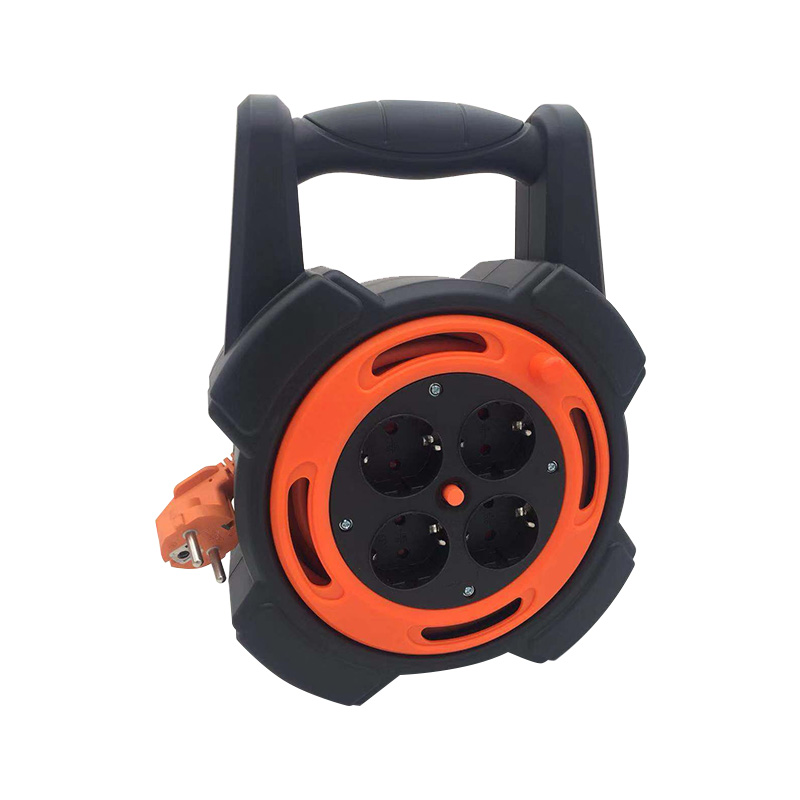Submit feedback
When using a cable reel, how can you avoid damage to the cable reel due to excessive tension?
 2025.03.24
2025.03.24
 Industry News
Industry News
In order to avoid cable damage due to excessive tension when using a cable reel, the following aspects require special attention:
1. Choose the right cable reel and cable type
Cable and reel matching: Make sure the specifications of the selected cable reel match the type, size and load capacity of the cable used. For example, choose a reel that is suitable for the length and thickness of the cable, and avoid using a reel that is too small to reel in and out a cable that is too long or too thick.
Load capacity: When selecting a cable reel, the maximum load of the reel must be confirmed based on the load capacity of the cable to ensure that the cable reel can withstand the tension of the cable without being broken.
2. Reasonable cable laying
Avoid excessive stretching: When using cables, try to avoid pulling the cables too tight or bending them at too small an angle. Excessive stretching will not only damage the cable, but may also cause the reel to not work properly.
Balanced tension: When the cable reel is unfolded, try to pull the cable out smoothly instead of pressing it tightly in a certain direction. If the cable gets stuck or encounters resistance when being pulled out, it may increase the tension and cause damage to the cable or reel.
3. Use overload protection device
Automatic power-off protection: Many modern cable reels are equipped with overload protection devices. When the cable tension exceeds the set value, the device will automatically disconnect to prevent the cable from being overstretched. Make sure the reel is equipped with such a protection mechanism and check its function regularly.
Cable tension limiter: Some cable reels have built-in tension limiters to limit the maximum tension of the cable and avoid excessive tension. Using a reel with this function can greatly reduce the risk.
4. Adjust the reel reeling and unwinding speed
Appropriate reeling and unwinding speed: When using a cable reel, adjust the speed of reeling and unwinding the cable, and do not pull out the cable too quickly. Pulling too quickly may cause excessive tension on the cable, especially when there is a jam inside the cable reel, which can easily damage the cable.
5. Keep the cable slack
The cable should be kept properly slack: When pulling out the cable, keep the cable slack to avoid pulling it too tight. Overtightened cables are not only easy to damage, but also cause damage to the cable insulation layer and even electrical accidents.
6. Check cables and reels regularly
Check cable wear: Before, during and after use, check the cable regularly for signs of wear, breakage or aging. If problems are found, replace the cable in time.
Check the status of the reel: Make sure that the rotating parts of the cable reel (such as bearings, reel turning devices, etc.) are not damaged to avoid uneven tension distribution due to the reel getting stuck or rotating poorly.
7. Avoid overloading the cable reel
Reel load: Do not overwind the cable, especially to ensure that the cable winding amount does not exceed the maximum load of the reel. Even if the cable seems to be able to continue winding, overload operation can still cause cable damage or reel failure.
8. Use appropriate traction devices
Use traction tools: In environments where greater pulling force is required (such as construction sites or large-scale construction sites), consider using a cable traction device to help apply uniform pulling force instead of relying solely on the cable reel. This can prevent the cable from being pulled too tight or unevenly.
Through reasonable selection, maintenance and operation, the cable reel can effectively avoid cable damage caused by excessive tension, extend the service life of the equipment and ensure safety.
 TOP
TOP
 ENG
ENG
 English
English русский
русский 한국어
한국어 Deutsch
Deutsch









